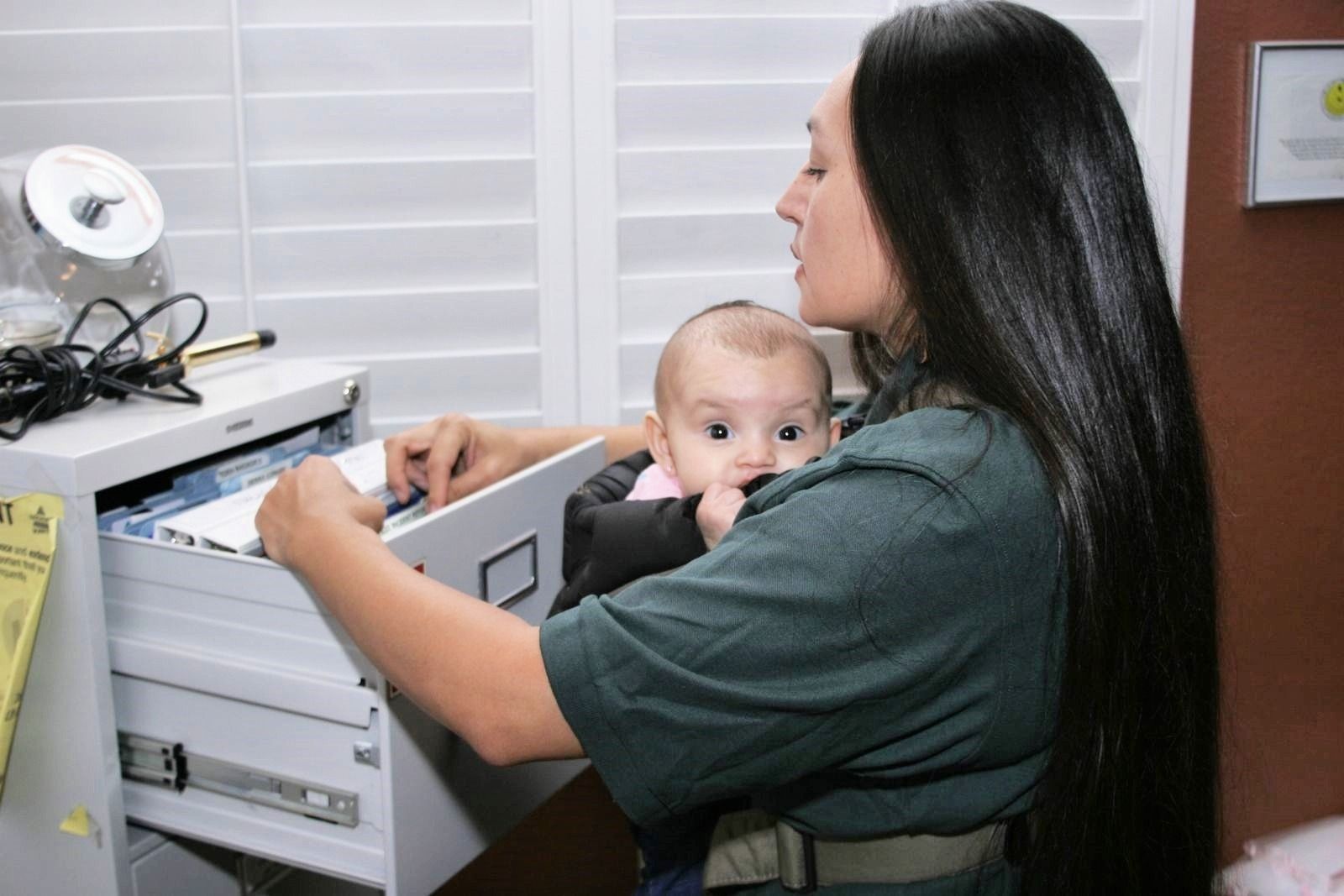Premature, Ill, and Special Needs Babies
A baby who is born prematurely or with a medical condition brings extra challenges and stress after birth. Your newborn may need to remain in the hospital neonatal intensive care unit (NICU) for additional days or even weeks to receive special care. You may feel sadness or shock about the birth and anxiety about the baby’s recovery.
However, know that your presence in your baby’s care is invaluable. In addition, your milk will provide incomparable food and medicine for your baby during their special care. Breast milk is superior to formula for preterm and ill babies in many ways.

- Best Nutrition: Breast milk is full of nutrients, antibodies, and growth factors, not present in infant formula, that protect vulnerable sick and premature babies and help prevent infections, such as necrotizing enterocolitis.
- Specialized Milk: Preterm milk is higher in protein and vitamins than full term milk and especially tailored to help premature babies’ growth.
- Easy to Digest: It is more easily absorbed by baby’s sensitive digestive system.
- Better Brain Development: The fat in human milk is especially good for babies’ brain development.
- Shorter Hospital Stay: Studies show that preterm and fragile babies have significantly better health outcomes and shorter hospital stays when they receive their own mother’s milk.
Getting Started Breastfeeding Babies in Special Care
If your baby cannot breastfeed right away, start expressing your first milk, colostrum, which can be fed to your baby and swabbed in the baby’s mouth. Colostrum is the milk that is highest in antibodies and factors that fight illness and provide protection during this vulnerable period. It is also most easily absorbed by the baby’s sensitive digestive system.
Pumping milk is often necessary for babies in the NICU because prematurity or illness may prevent them from sucking well at the breast milk. Your pumped milk can be fed through a tube that passes through their nose or mouth and into their stomach. Pumping also helps you to develop a milk supply so that you can try to transition the baby to direct breastfeeding when the baby is ready.
Other early steps to take to get breastfeeding started are:

- Start expressing your milk early, ideally within the first hour after birth. Express milk at least 8 times every 24 hours. Having at least one pumping during overnight hours, especially between 1 a.m. and 4 a.m., helps establish your supply and can provide more milk than other pumping sessions. Use gentle hands-on pumping techniques to obtain the most milk from your breasts. The lactation staff at the hospital can help you get started with pumping and support you with information to overcome breastfeeding challenges.
- Begin skin-to-skin care (also known as “kangaroo care”) with your baby as soon as medically possible and provide it as often as possible. Kangaroo care has been shown to help stabilize baby’s heart rates and oxygen levels. It also helps you to release oxytocin, a hormone which will help you feel closer to your baby, and which helps build your milk supply. (See more on skin-to-skin contact in the Beginning Breastfeeding page.)
- Ask for assistance and support from partners, family and friends to help you recover from childbirth. Learn more about how they can help on the Dads, Partners, & Family page.
- Get rest and stay hydrated and fed. Ask family and friends to bring you healthy meals. Always keep a water bottle nearby and drink to thirst.
- Consult a board-certified lactation consultant at the hospital or in the community who can help you with the special challenges of establishing a milk supply and transitioning to direct breastfeeding. See the Get Help page to help find a lactation consultant.
Donor Human Milk
If you are unable to provide your own milk, donor human milk is the next best alternative food for your baby. If it has not already been offered to your baby, ask hospital staff for it. See the Donor Human Milk page for more information on the health benefits of donor milk.
Additional Resources
Websites
American Academy of Pediatrics (English and Spanish)
Breastfeeding Babies with Special Needs (English)
La Leche League International (website available in many languages)
La Leche League USA (English)
Videos
First Droplets (English and Spanish)
UC San Diego Health—Breastfeeding Premature Infants Series (English)
Low Milk Supply/Slow Infant Weight Gain
At times, you may think that milk supply is low in the early weeks if your baby wants to feed frequently or seems to cry a lot. Know that newborns do feed frequently and sometimes even cluster feed (feed again soon after the end of the last feeding) in the early weeks while your milk supply is being established. Also, babies sometimes want long feedings and at other times want a quick snack, even between feedings.
However, if your baby's frequent feedings are concerning to you, here a checklist of signs to help you know whether your baby is getting enough to eat:
- Baby feeds at least 8-12 times every 24 hours.
- Most feedings are comfortable, of if breastfeeding has been painful, the pain is improving day by day.
- Baby has returned to birthweight by 2 weeks and is gaining between 2/3 to 1 ounce of weight a day (or 5-7 oz. per week), based upon weight checks at baby's doctor's office using the same scale at each visit.
- Baby is making enough wet and soiled diapers. This chart tells you how many diapers to expect based upon baby’s age:
| Day | # of Diapers /Color | # of Stools | Stool Color & Consistency |
|---|---|---|---|
| 1 | 1/pale yellow | 1 | Black, tarry, sticky |
| 2 | 2-3/pale yellow | 2 | Green/black, changing |
| 3-4 | 3-4/pale yellow | At least 3 | Green/yellow, soft |
| 4 | 4-6/pale yellow | At least 3 | Yellow/seedy, soft/liquidy |
| 5-30 days | 6+/pale yellow | At least 4 | Yellow/seedy, soft, liquidy |
| 31+ days | 6+/pale yellow | May slow down to 1 everyday or every few days | Yellow/seedy, soft, liquidy |
Some parents worry if the baby suddenly wants to eat more frequently or for longer periods in the early weeks. If the baby’s diaper count is still good, your baby’s frequent cues to feed may be due to normal “growth spurts” that usually settle down after 2-3 days. It’s also normal for your breasts to adjust to the baby’s feedings and to not always feel as full as they did during the first few weeks. There’s still milk there even when they feel less full.
If your baby is not making enough wet and soiled diapers or is not gaining enough weight, check the feedings and ask yourself these questions:
Is the baby eating at least 8-12 times every 24 hours?
If the answer is no, help your baby eat more often. Breastfeed whenever your baby shows early hunger cues. If your baby is not waking up every 2-3 hours to feed, wake your sleepy baby and offer a feeding. Encourage the baby to eat more actively at the breast by doing gentle massaging your breast during feedings. Help the baby to eat at the first breast until it's softer, then offer the second side. In the early weeks, most feedings take 20-30 minutes or often longer. However, baby may sometimes want shorter, "snack" feedings.
Are the feedings painful for you or is the baby struggling to stay attached to the breast while feeding?
These are two signs that the baby is not feeding well.
If your baby is not feeding well or if the feedings are painful and difficult for you, read "Getting a Deep Latch" on the Beginning Breastfeeding page. Latching is a new skill that both you and your baby need time to practice. If your pain does not start to improve day by day after baby's latch improves, seek help from a skilled lactation supporter. Skilled lactation support can help end the pain and get your baby's weight gain back on track!
Medications and Diagnostic Tests During Lactation
If you need to take a prescription or over-the-counter medication while nursing, the good news is that most medications are safe during lactation. Small amounts of the medications may pass into your milk, but usually this causes little or no effect on the baby. Because of the many health benefits of breastfeeding, breast milk with tiny amounts of medication is considered far healthier than switching your baby to infant formula, even temporarily.
There are a small number of medications that should be avoided during nursing. For more information on the safety of drugs during breastfeeding, consult your health care provider and dependable resources on medication safety during nursing including:
- Drugs and Lactation Database (LactMed®) - NCBI Bookshelf)
- Infant Risk Center--Call Infant Risk Hotline Monday – Friday, 8am – 5pm CT, (806) 352-2519
- E-lactancia (available in English and Spanish)
Some over-the-counter decongestant and allergy medications can temporarily decrease your milk supply. Alternative medications are available. Learn more about cold and allergy medications at the Infant Risk website.
Most diagnostic tests using radiation, including x-rays, mammograms, MRI, and CT or CAT scans are all safe during lactation and do not require that breastfeeding be interrupted. Most contrast agents used in these diagnostic tests do not pass into the milk. The few that may pass into the milk are not considered to be harmful to the baby. Because of the many different contrast agents, always check with your physician and dependable sources of information such as LactMed® to determine if the contrast agents are safe for lactation.
Tests that involve radioactive materials pose a concern for breastfeeding because these materials pass into the milk. If the test cannot be delayed until after the baby is weaned, consult with your healthcare provider and the medication resources such as LactMed® that are listed above for recommendations about pumping, dumping and handling of the milk following the test.
For more information on the safety of breastfeeding during diagnostic testing:
Academy of Breastfeeding Medicine, Radiology and Nuclear Medicine Studies in Lactating Women
Alcohol, Smoking/Vaping, and Cannabis
Alcohol: When you drink alcohol, it passes into your milk and is found at the same level as it is in your bloodstream. The alcohol level in the milk decreases as the hours pass after the last drink. It is best to feed the baby before having the alcohol and to wait 2-3 hours for each alcoholic drink consumed before feeding the baby. Pumping and discarding the milk will not help to decrease milk alcohol levels more quickly. You must allow your body time to process the alcohol. When you no longer feel under the influence of alcohol, it’s safe to breastfeed the baby. If more than two drinks are consumed, you should wait 4-6 hours before breastfeeding the baby.
Tobacco/nicotine (smoking & vaping): It is safest for both the pregnant or breastfeeding parent and for the baby for the parent to quit smoking or at least reduce smoking. Though smoking and vaping during breastfeeding are not recommended due to nicotine and other chemicals passing into milk, tobacco users can breastfeed or provide their milk to the baby. However, smoking may decrease your milk supply, so the infant’s weight gain should be monitored.
NOTE: Any exposure to second-hand smoke can increase your baby's risk for sudden infant death syndrome. If you or a family member smokes, they should do so outside of the house away from doors and windows.
Cannabis: The active ingredient in cannabis (marijuana), THC, passes into breastmilk. The American Academy of Pediatrics and the World Health Organization recommend avoiding marijuana use during pregnancy and lactation due to lack of sufficient studies on cannabis and lactation and the potential for harm to the infant. If you continue to use cannabis, these health authorities recommending reducing your use.
NOTE: Cannabis should not be smoked by anyone near an infant because exposure to cannabis smoke increases your baby’s risk of sudden infant death syndrome.





